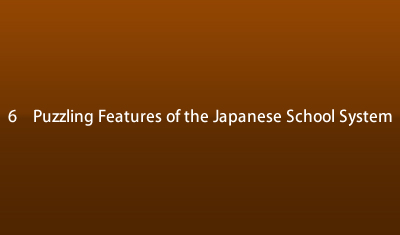 |
Q What accounts for the proliferation of clubs at Japanese universities?
A When a student finally manages to pass the stiff entrance examination and gets accepted to a university, usually the only thing left to do is to prepare for job hunting. Students tend to be easy-going due to the fact that many did not enter universities with the intent to aspire for higher learning, nor did they enter the department of their choice.
Friends group together and become absorbed in a common activity they enjoy doing together. Especially in the period of high economic growth when there were no worries about employment after graduating, universities became recreational centers.
Club activities are left entirely up to the students and excluding clubs with a long history, there now exists all sorts of every conceivable kind of club. There is even a Sleeping-in-the-Open Nature Study Club and a Pop Idol Study Club at a certain university.
It is relatively easy to get accepted to American universities but once admitted, the students are required to buckle down in order to keep up with classes. Also, many American students are on their own once they enter university and must put in a lot of hours at work to earn their own tuition leaving no time to be involved in clubs. This differs greatly from Japanese students whose parents pay for their tuition and living expenses. What Japanese students earn at their part-time job go for club activities and other incidentals to spend as they please.



